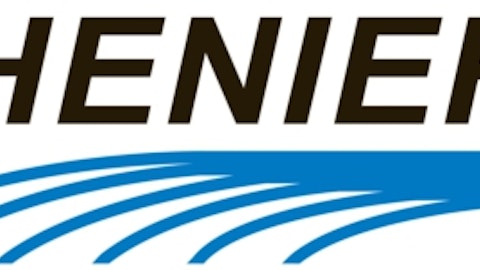The Dow Jones Industrial Average is at an all-time high near 15,000. In 2009, when it fell below 7,000, most investors (including myself) could not have fathomed that it would get to this level so quickly. This is a reminder that the stock market is the best investment vehicle over the long haul for growing your nest egg. It is exciting to watch the Dow achieve the 15,000 level, but the downside is that a large number of stocks have gone up to the point to where they are overvalued.
Two compelling examples of overvalued companies

In the first quarter, its revenue was relatively flat and earnings increased 14% from last year. Kimberly Clark Corp (NYSE:KMB)’s FORCE (Focused on Reducing Costs Everywhere) program was responsible for $85 million in cost savings, which provided a boost to their earnings growth. While this is a significant achievement, cost reductions can only go so far, and eventually, sales must grow at a quicker pace.
Kimberly Clark Corp (NYSE:KMB)’s dividend yield is slightly over 3% and their impressive dividend includes 41 years of consecutive annual dividend increases. The dividend has increased by a total of 40% over the last five years. Their payout ratio of 65% is higher than I prefer, but the dividend growth should continue at a moderate level.
W.W. Grainger, Inc. (NYSE:GWW) is a distribution company serving the industrial and large commercial industries with annual sales of $9 billion. They distribute over 400,000 products including tools, motors, office supplies, and batteries. W.W. Grainger’s first-quarter earnings were positive. Earnings increased 13%, resulting in a significant improvement over the previous two quarters.
W.W. Grainger’s dividend yield is 1.50% and their impressive dividend history includes 42 years of consecutive annual dividend increases. Their dividend has doubled over the last five years and with a payout ratio of 32%, their impressive dividend growth should continue.
Kimberly Clark Corp (NYSE:KMB) has a P/E of 23 and W.W. Grainger has a P/E of 25. Both of these are higher than the S&P 500’s current P/E of 18.5. Over the last three years, the share prices of both of these companies have made impressive runs. Kimberly Clark Corp (NYSE:KMB) increased from $60 in 2010 to its recent all-time high of $105, and W.W. Grainger increased from $100 in 2010 to its recent all-time high of $250.
Although I believe that Kimberly Clark Corp (NYSE:KMB) and W.W. Grainger are great companies, I believe that their share price appreciation has outpaced their earnings growth, and there are currently better opportunities to consider. I recommend waiting for a pullback before opening or adding to a position in these two companies.
An attractive blue chip
General Electric Company (NYSE:GE) is a diversified conglomerate with annual sales of $147 billion. From light bulbs to jet engines to power plants, General Electric Company (NYSE:GE) is involved in virtually every industry that exists. Its business segments include Energy Infrastructure, Aviation, Healthcare, Transportation, Home and Business Solutions, and GE Capital.
The great financial crisis
All of General Electric Company (NYSE:GE)’s businesses were affected by the great recession, which resulted from the financial crisis, but GE Capital, in particular, suffered immensely. Similar to many other financial institutions, GE Capital consisted of some risky activities such as the reliance of commercial paper and providing loans without ensuring appropriate collateral. These activities resulted in a historic number of defaults.
The bottom line was that GE Capital was very large and not prepared for a crisis of this magnitude. As a result, GE’s earnings fell from $22.5 billion in 2007 to $10.8 billion in 2009.
Prior to the financial crisis, General Electric Company (NYSE:GE) had an elite dividend history that included decades of consecutive annual dividend increases. Unfortunately, General Electric Company (NYSE:GE) was forced to cut its quarterly dividend in 2009 from $0.31/share to $0.10/share.
The great turnaround and Foolish conclusion
GE has since eliminated the risky components of GE Capital and strategically realigned it into a smaller, more focused business segment that adds value to its non-financial business segments. In addition, GE has increased its focus on its global, high-growth industrial, oil and gas, and healthcare businesses, which will be vital in providing the growing need for infrastructure in developing markets.
These strategic moves have paid off. GE’s earnings have increased for three consecutive years from $10.8 billion in 2009 to to $14.7 billion in 2012. GE has also made it a priority to re-focus on its dividend. Since the dividend cut, GE has increased the quarterly payout five times from $0.10/share to $0.19/share, resulting in a 3.40% dividend yield. With a payout ratio of 50%, I believe that these dividend boosts will continue well into the future.
In my opinion, the market is not giving GE enough credit for its remarkable turnaround. Its P/E is 15.7, which is below the S&P P/E of 18.5, and GE is well below its all-time high of $60/share, which occurred in 2000.
I believe that GE will be firing on all cylinders as the economy continues to recover and developing markets continue to advance. I also believe that some investors will look back after three to five years and say “how could I have missed out on GE’s amazing run to multi-year highs?” Do not be one of these investors!
The article An Attractive Opportunity Still Exists Despite the Market’s Run Up originally appeared on Fool.com and is written by Greg Williamson.
Copyright © 1995 – 2013 The Motley Fool, LLC. All rights reserved. The Motley Fool has a disclosure policy.

